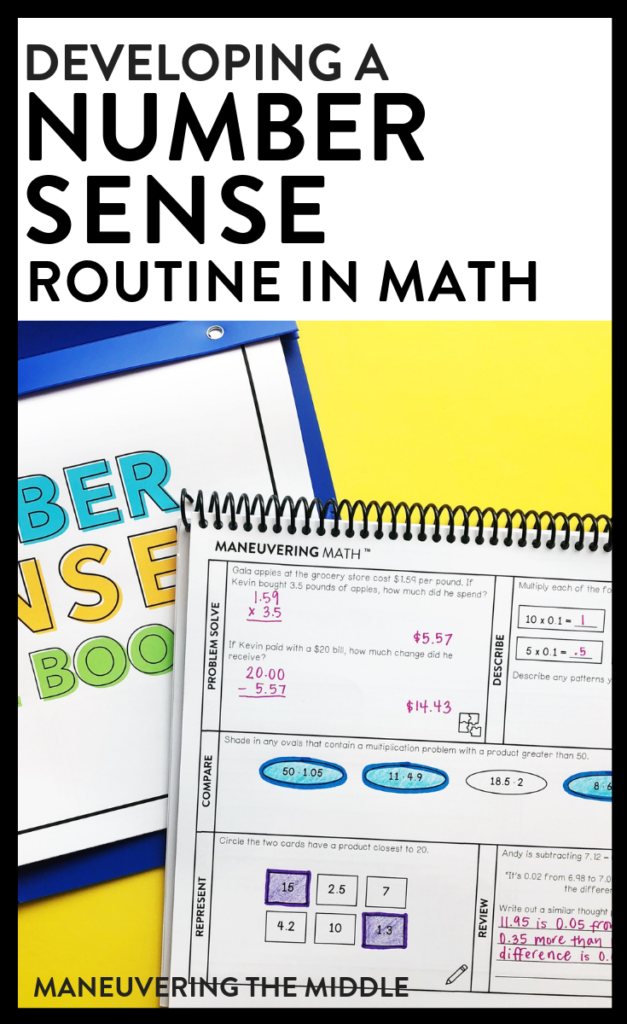When we surveyed math intervention teachers about the struggles that students have, there were several themes that we heard, and “a lack of number sense” sums up the most prominent one. From my personal experience, I can attest that number sense does come easier for some students than others. It might be why adults say things like, “I am not a math person.” Is it possible that we are all math people, but we don’t all learn the same way? Is it possible that students who have a conceptual understanding of part-to-whole relationships might find fractions an easy concept? I think so. This is why the first component of our Maneuvering Math™ Intervention Program is a daily number sense routine.
In a typical 50-minute on-level class, setting aside precious minutes for number sense doesn’t always make it in the lesson plan. However, in a math intervention class, building number sense is critical and can have a lasting impact on students.
A DAILY NUMBER SENSE ROUTINE
COMPONENT 1 OF MANeuvuering math
How do you build a number sense routine?
Lately, there has been growing popularity around the phrase “number talks.” Number talks are short problems in which students are encouraged to use mental math and then share their responses with the class. The teacher encourages students to share many different justifications and strategies as to how they solved. The focus of the number talk is the dialogue and discussion, rather than the correct answer.
We developed a number sense routine that we felt would be best suited for middle school students, a number sense notebook. We included different types of number sense-building questions and spiraled a review throughout the notebook.
Our hope and intention is that the number sense notebook becomes a jumping off point for these math conversations, like number talks. The main difference between our daily number sense routine is that not all of the questions can be solved with mental math. Some may disagree, but I think students who have a shaky math foundation need to have the freedom to write and sketch.
What does a number sense routine look like?
We all have to take a structure and make it work for our students and classroom, but I would love to share a few things to keep in mind when it comes to a number sense routine.
- Make it a routine: Five to ten minutes each and every day really does add up! If you are able to incorporate number sense for just 10 minutes a day, you have added over 30 hours over the course of the year! Plus, it is a great way to start a class similar to a warm-up or a bell ringer.
- Model your thinking: One of the main benefits to a number sense routine (and a number talk) is the value that you are able to share through modeling. When you first start, you might consider talking through a problem on your own to show students what you expect and to provide them with alternative strategies that they may not have considered.
- Model the dialogue you expect: Middle schoolers aren’t naturally going to dialogue appropriately. Be sure to model the way you expect students to respond to one another and share with the class, especially if they disagree.
- Debrief and discuss: Again, the focus of this number sense routine is the conversations and justifications that students share. When they contribute a possible approach to solve a problem, then they will slowly but surely gain the confidence to work with numbers.

We really considered all of these aspects when developing our number sense routine and even included sample discussion questions to help you facilitate conversations. They are a great jumping off point if you are new to building number sense.
How do you build number sense in your classroom? Have you tried a number talk?








Can you buy the number sense notebook you are talking about?
You can! It is part of our Intervention program. You can find it here.
Is your Number Sense Notebook available to purchase from Teachers Pay Teachers? I was unable to find it, but I would love to know where it’s available.
Hi, Amelia! It is a part of our intervention program.